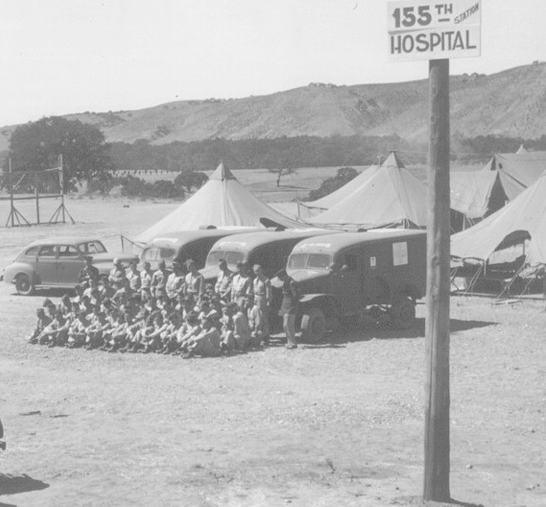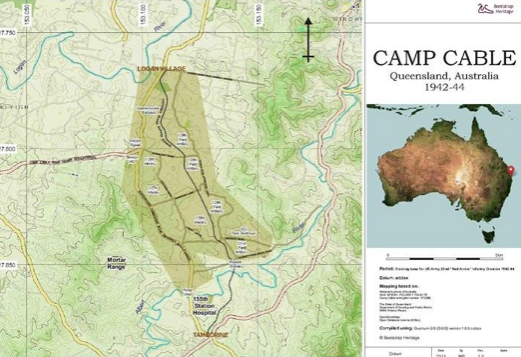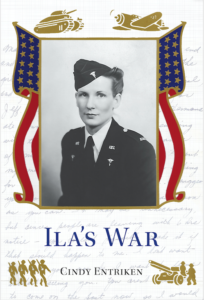Prior to starting Ila’s War in the summer of 2008 I haunted bookstores looking for non-fiction books about the war in the South Pacific, specifically books written by U. S. Army nurses. I learned pretty quickly that WWII memoirs were written primarily by men about men, but I did find a few written by or about women. Women’s WWII memoirs seemed to fall into two basic categories. One was the fact-laden compilation of WWII nurse experiences in books like A History of the U. S. Army Nurse Corps by Mary Sarnecky or They Called Them Angels by Kathi Jackson. These books and others like them had indexes and end notes and were packed with historical facts but they read more like text books than novels.
Letters Home by Sally Hitchcock Pullman and One Woman’s War by Anne Bosanko Green were examples of the second category of books – correspondence from nurses at the front to their families back home with the letters arranged in chronological order. This type of book had no index or end notes. Additionally the letters didn’t start until 1944 when the authors entered the military whereas Ila’s letters began in 1934, and her Army letters began in 1940. I envisioned a book that would read like a novel but would contain historically accurate information with endnotes and a topic index so the reader could locate specific information quickly. I was heartened when I didn’t find any books like the one I envisioned. I decided that was encouragement from the universe to proceed with my book.
My next step was to figure out where Ila had been during her time in Australia.
So after obtaining her letters I put them in date order and began reading them. About a fourth of the way through I found this in a letter dated May 15, 1942:
Well, Mother, tell everyone hello and I’ll be back – by way of New York – at least that [sic] what I hear.
Miss Harper, the Chief Nurse, says we have the best [ship] of the convoy. I guess there’s a fleet going, too – so there must be going to be a big fight when the Yanks and Ila land! ha
I’m getting so excited I can hardly wait. And at the same time a calmness that assures my safety. I’m not the least bit jittery any more. . . .
You have my address now —
2nd Lt. Ila L. Armsbury
155th Station Hospital
A.P.O. 1142
% Postmaster
San Francisco, Calif.
The identifier “155th Station Hospital” was the clue I needed to figure out Ila’s itinerary while she was in Australia.
I used 155th Station Hospital (SH) as my search phrase and the first thing that popped up in the search results was:
155th Station Hospital (US Army) in Australia during WW2
I still remember how thrilled I was to see that search result. And when I clicked on the link and saw the information and map I got a lump in my throat and tears in my eyes. Although Ila had been dead since February, 2003, at that moment I felt her standing right behind me, her hand on my right shoulder. I could almost hear her say, “That’s it, Honey. That’s where I lived for two long years.” There was no photo of the 155th among Ila’s letters, but I finally found one courtesy of the WW2 US Medical Research Centre on their web site, www.med-dept.com. See the photo below.
WW2 US Medical Research Centre has an impressive collection of photos of the 155th as well as an extensive write-up about the activities of the SH on their web site. You can also see photos of other military hospitals, medical kits, equipment and more used during the war. Ben Major from England and Alain Batens from Belgium have done a remarkable job in preserving US history via the internet. Spend some time at www.med-dept.com – it will be well worth your effort.

“Zone of Interior, Camp Roberts, San Miguel, California. Partial view of 155th Station Hospital personnel and ambulance vehicles. Picture taken 20 September 1941.”
When I was working on my first master’s degree I spent long hours sitting on a hard wooden chair at one of the huge tables in the Ablah Library at Wichita State University, going through the card catalogues, reading cards until my eyes crossed. What a difference a few years makes!
As you know, I’m no computer expert but I do know how to type key words and phrases into the search box. When I first typed Camp Cable into a search box five years ago, I got only one hit. There was no Wikipedia information and no youtube video. But there was Peter Dunn and his incredible Australia @ War website.
Fast forward to today and you’ll see how much more information the internet offers about Camp Cable. There’s a Wikipedia entry and even a media category with fifteen images from Camp Cable. Life is sweet! The image below is from the Wikimedia Commons and was taken January 10, 2013 by Brass razoo.
Let me give you a word of caution about Wikipedia. Because the articles on Wikipedia are written by us – the general public – as opposed to experts, an article may contain errors. I don’t use Wikipedia as my primary source for anything – but I do use it. The articles give me a basic understanding of whatever I’m researching. But even more important are the sections for references, further reading, and external links. I use them to find my primary sources.
So while you may think that your research topic is obscure, don’t give up. You’ll be surprised at what you find on the internet. And just because there’s no information about your topic today, it may be that next week, next month, or next year something will appear. My experience with Camp Cable bears this out.




Cindy, have you thought about having a next/previous button on your blog? For people who just want to read the entries in order. I am excited about your blog- congratulations on the book!
Sheila, thanks for the suggestion. I’ll forward it to the web designers. Also thanks so much for the supportive and encouraging comments. After working so long and so hard on this book it feeds my soul to receive praise from friends like you. Cindy